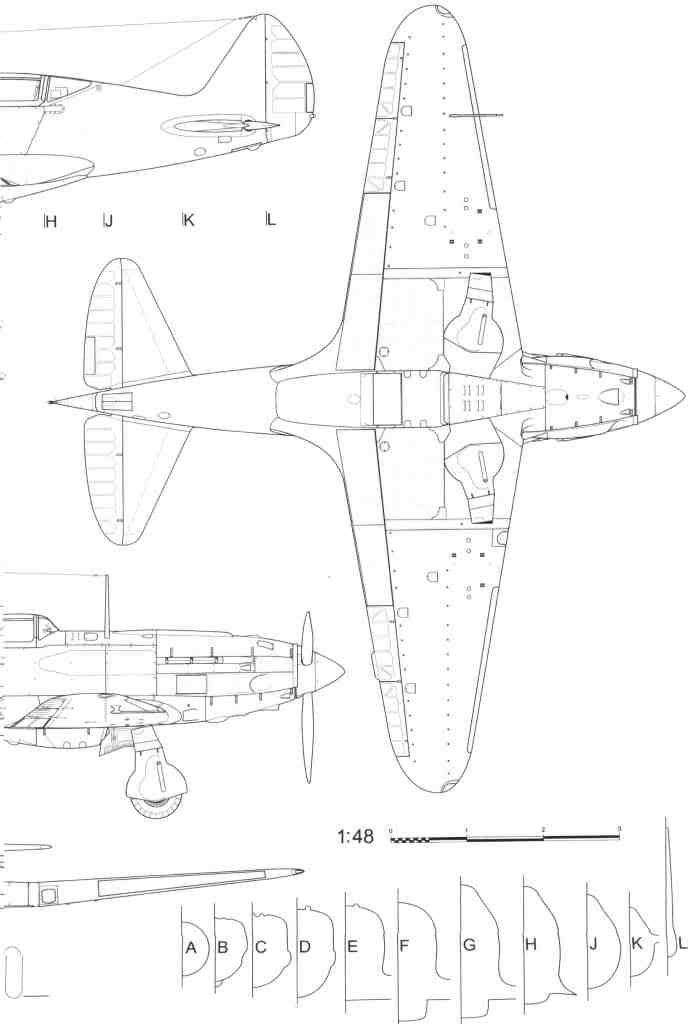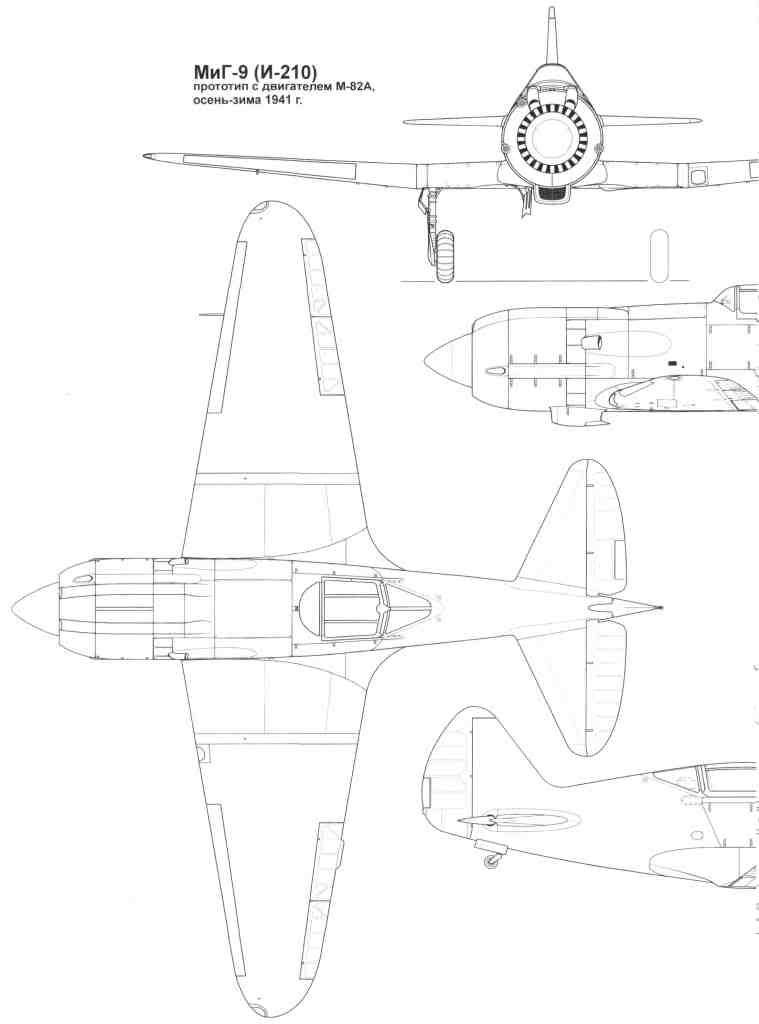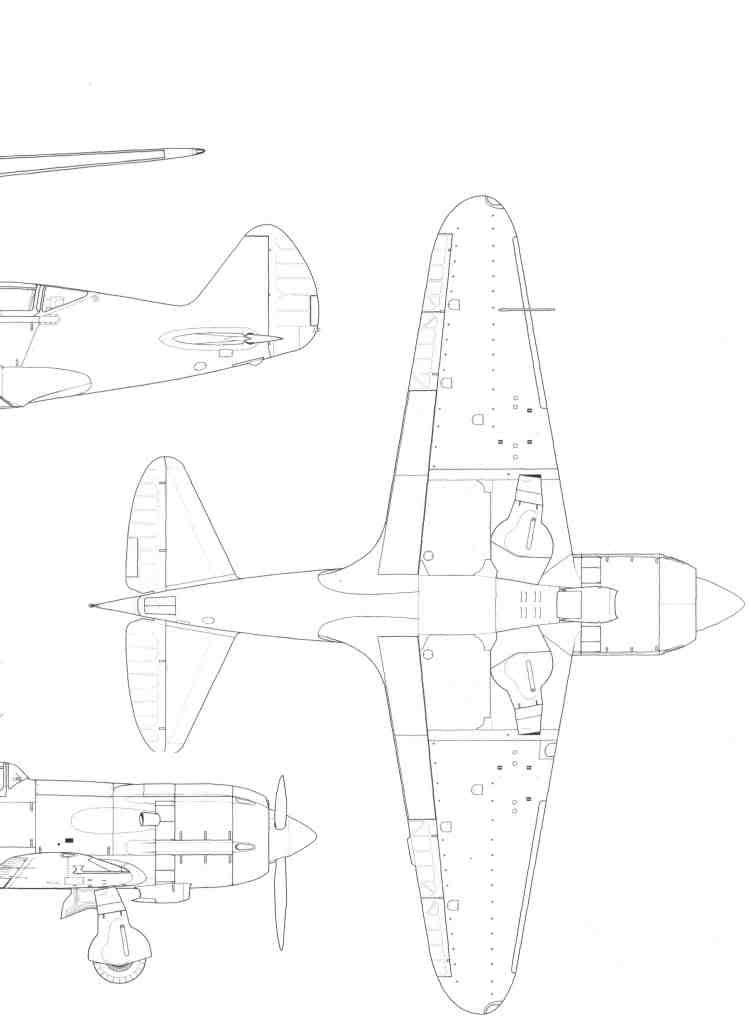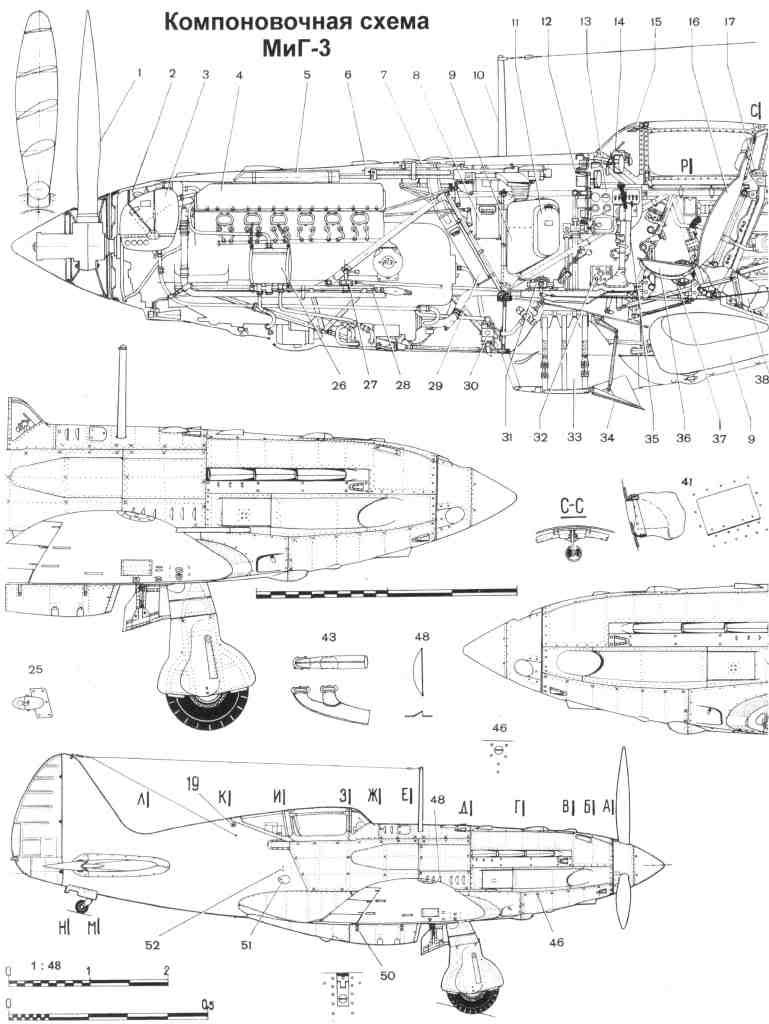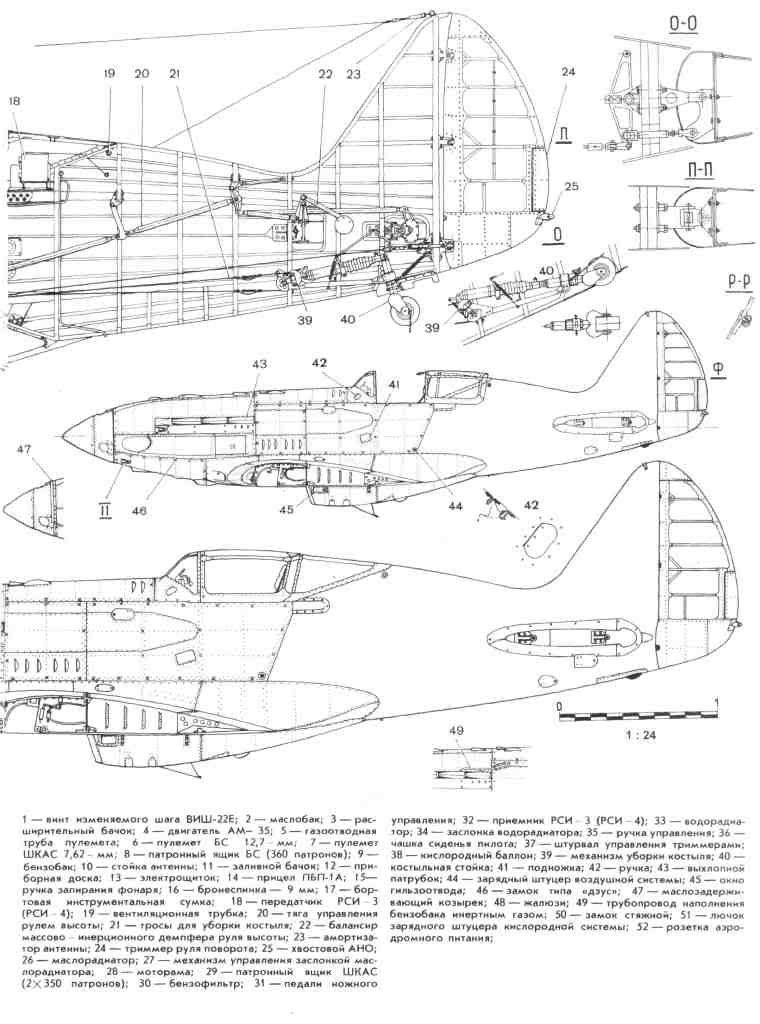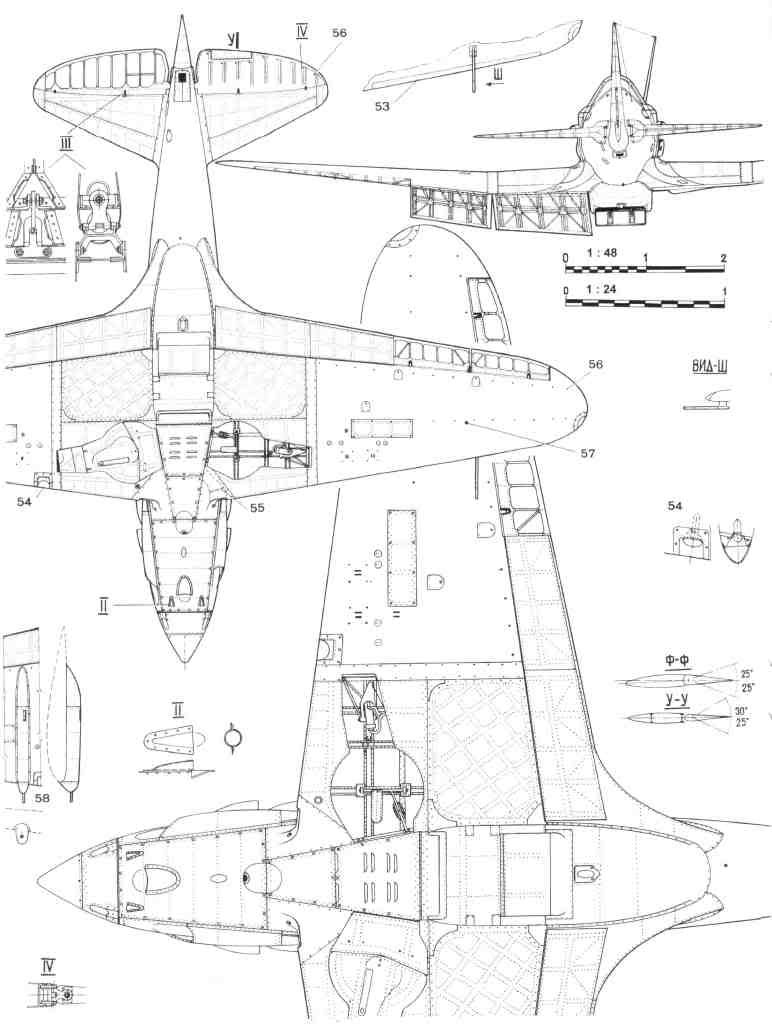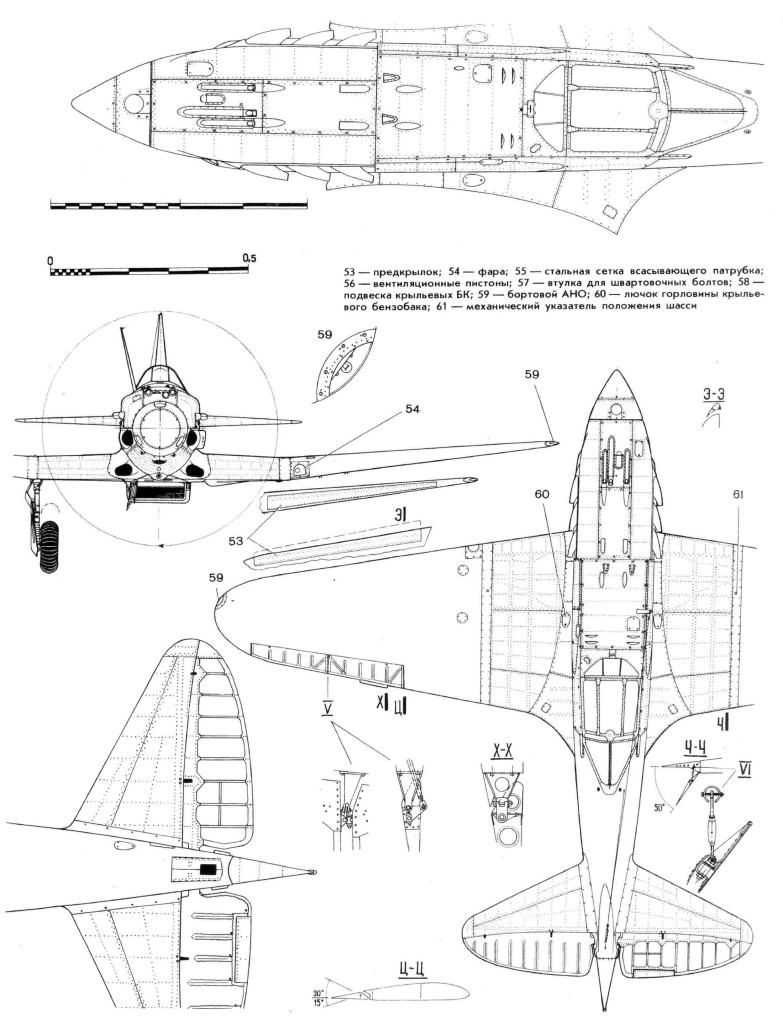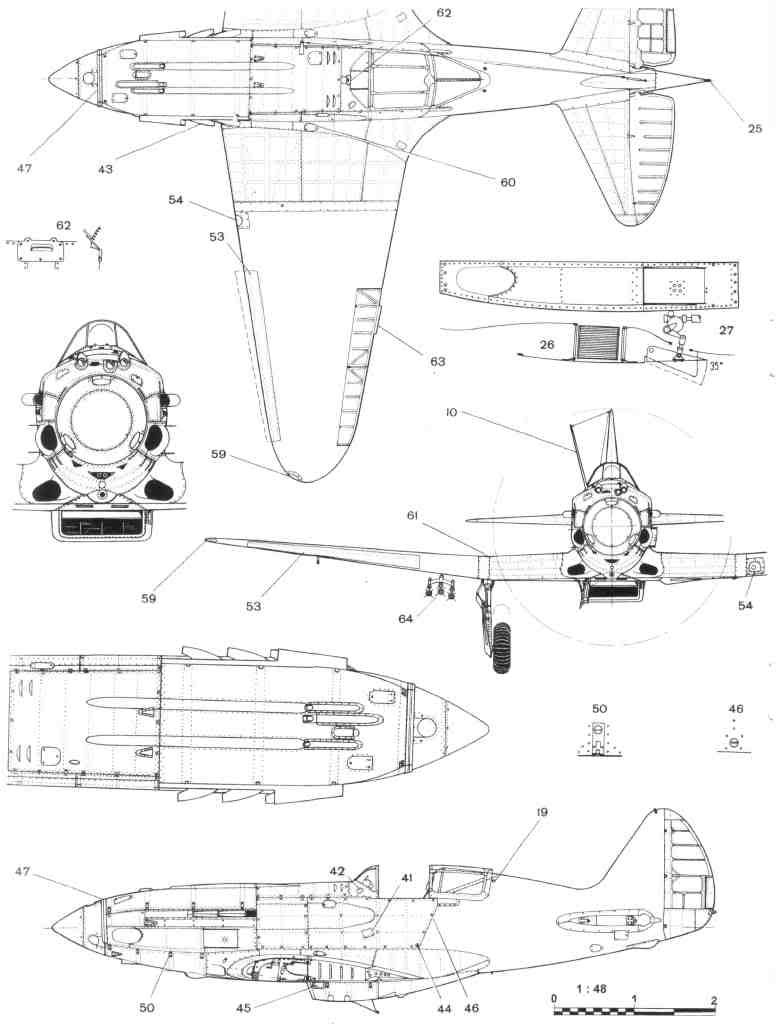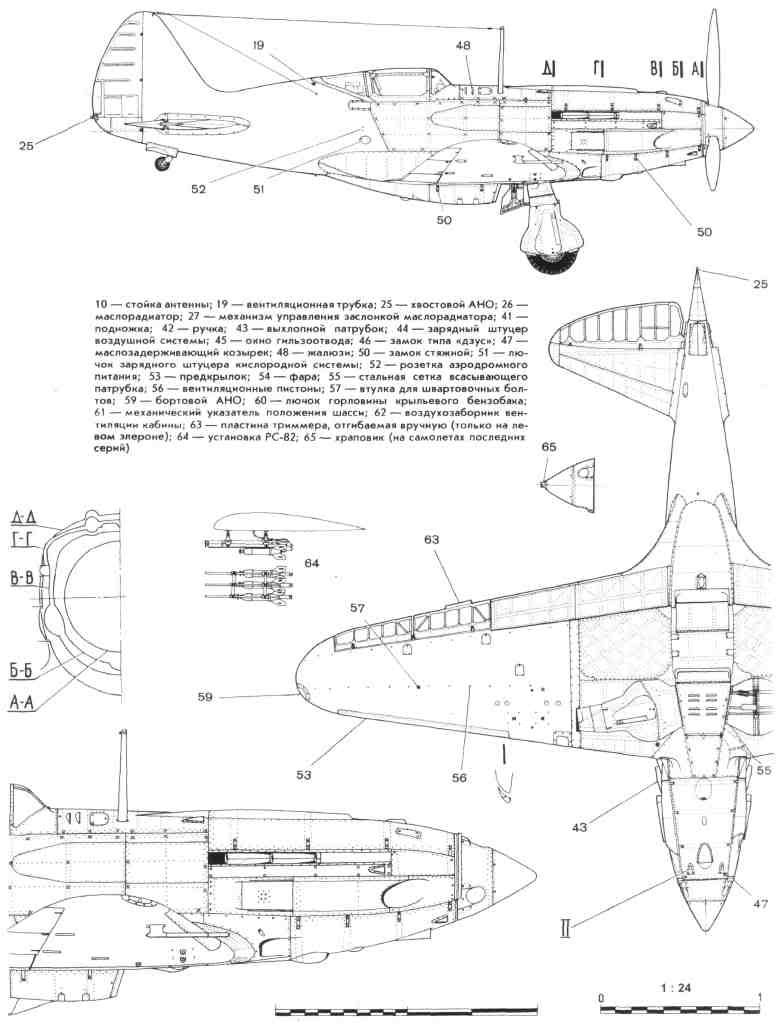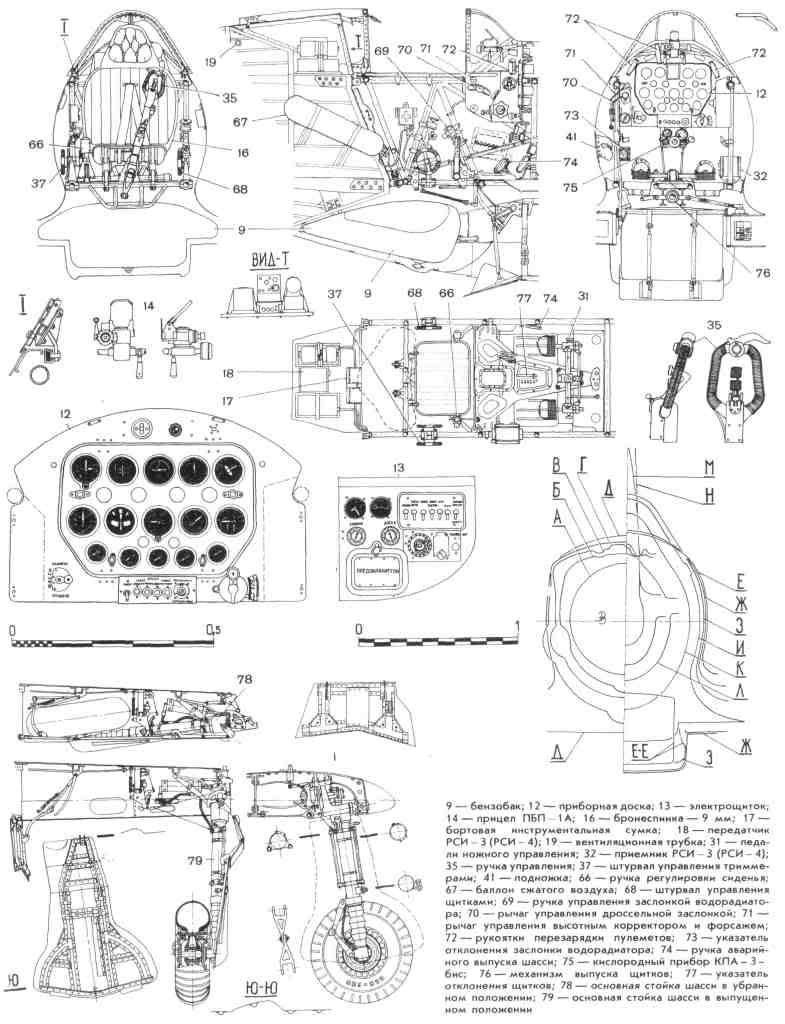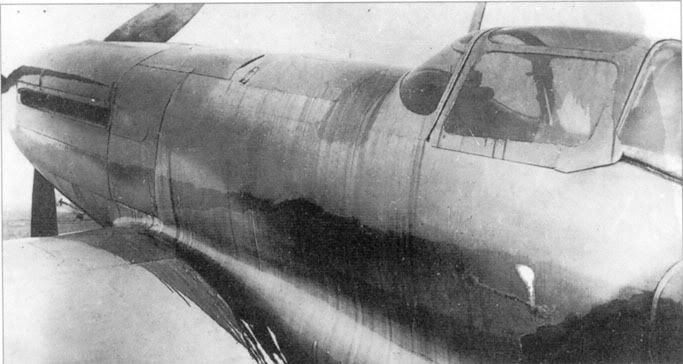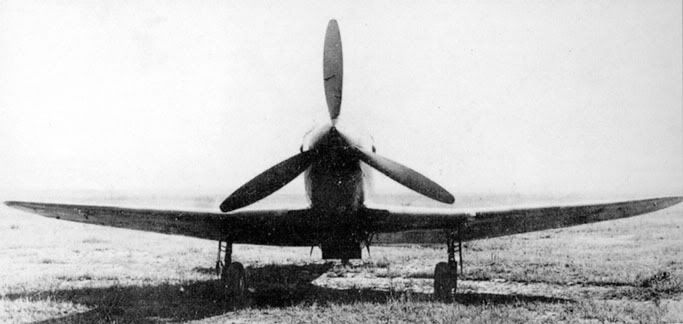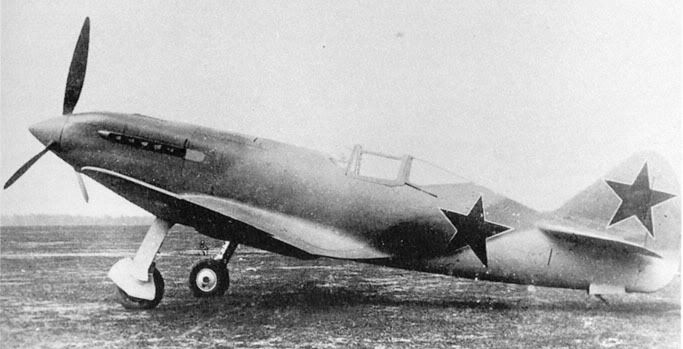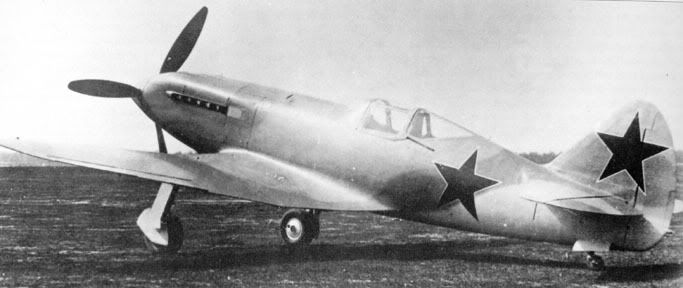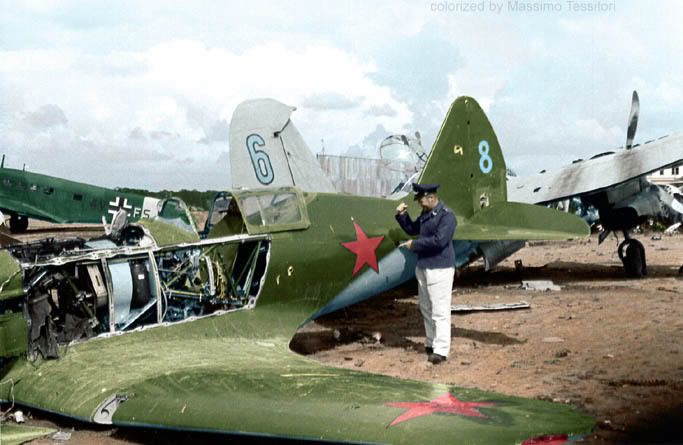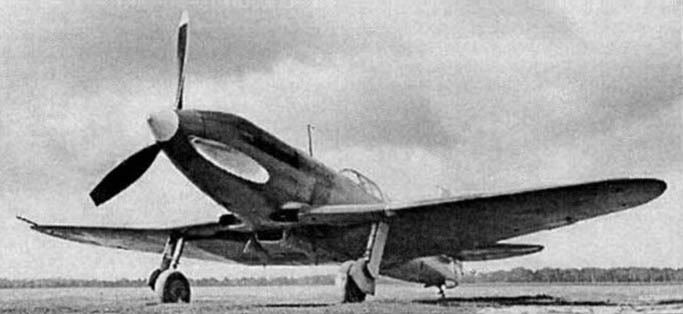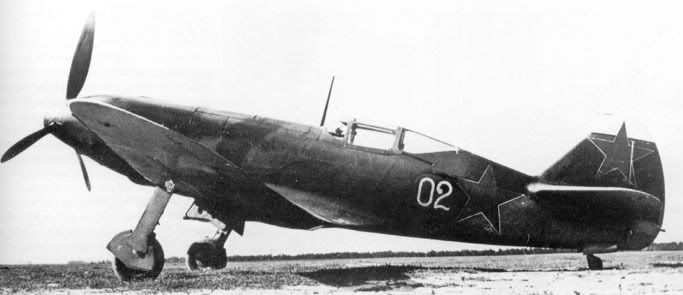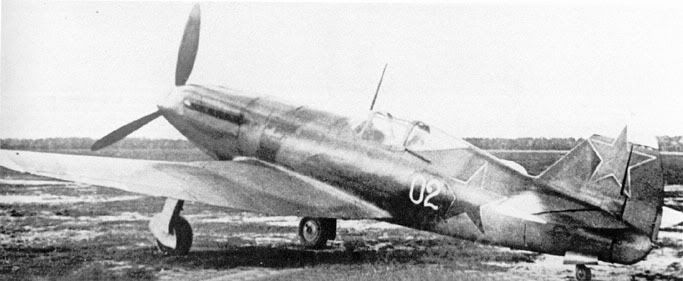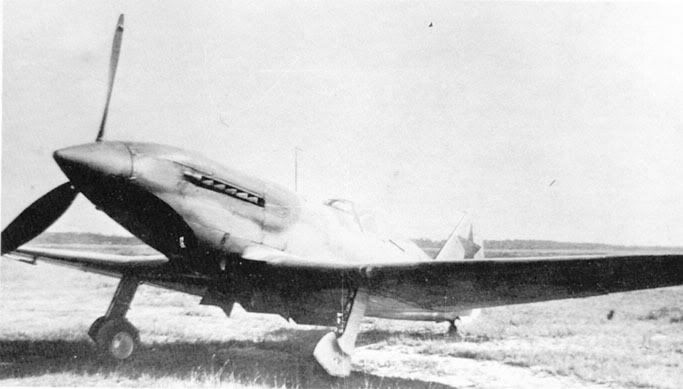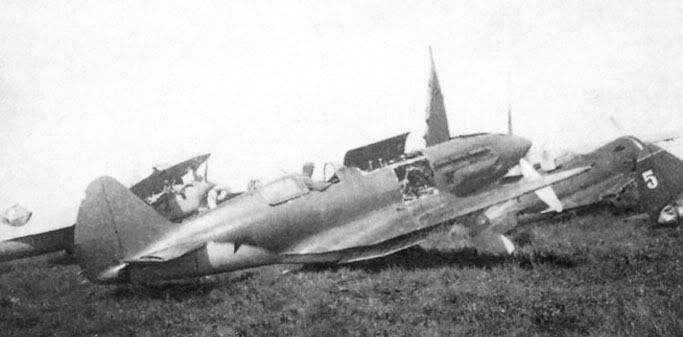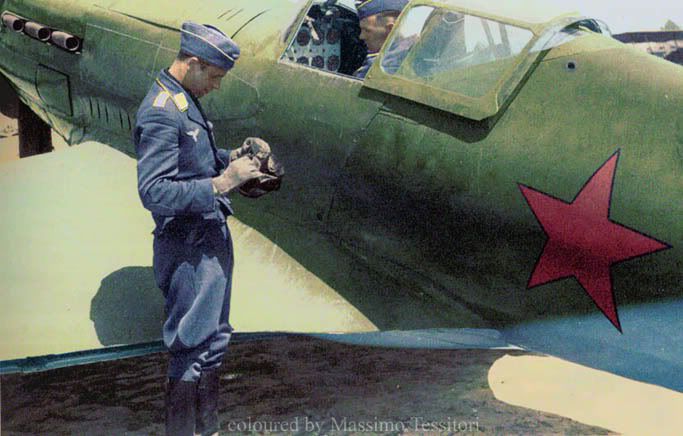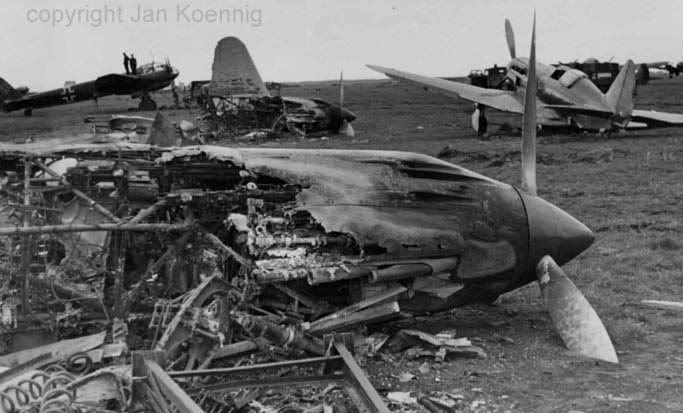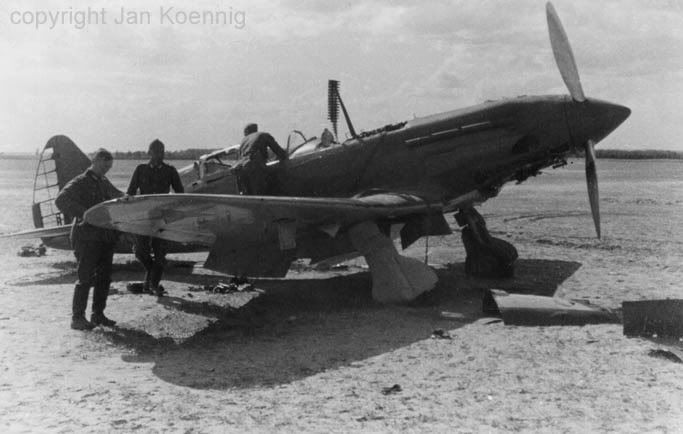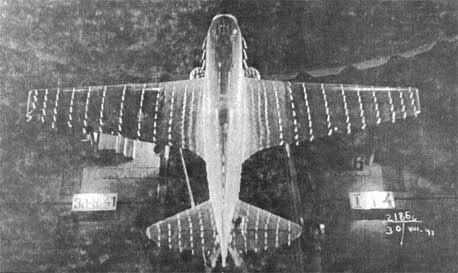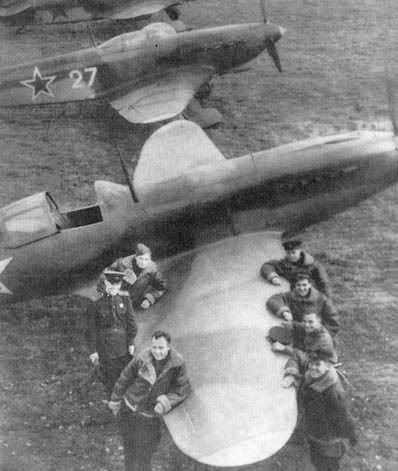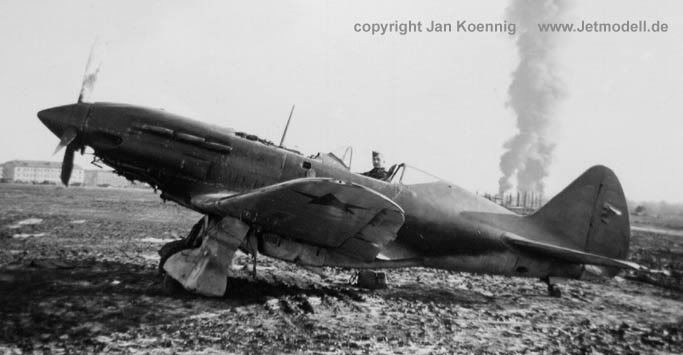Estás usando un navegador obsoleto. No se pueden mostrar estos u otros sitios web correctamente.
Se debe actualizar o usar un navegador alternativo.
Se debe actualizar o usar un navegador alternativo.
MIG-1 y MIG-3
- Tema iniciado pabloeldido
- Fecha de inicio
Muy buenas fotos e informe Pablo.
Ya que su misión primaria era la intercepción a gran altitud, tenes idea si la cabina era presurizada? Me parece haber visto en un programa sobre los MiG que si, pero no recuerdo bién si era este o el MiG-9
Hola Grulla, no eran presurizados, mira este comentario:
Pressurized MiG-3 (project XS)
Before the war, a pressurized cockpit was required for I-200 and I-153; the chief designer of Zavod 482, A.Y. Tserbakov developeed three versions of the pressurized cabin. Due to the starting of the war, the project was abandoned

This photo is of the most famous MiG-3 pilot, Alexander Ivanovich Pokryshkin

These pictures represent the ace (Hero of SU) Zakhar Sorokin in front of his Mig of 72 SAP VVS-SF (Northern Fleet, later 2 GIAP VVS-SF) in Vayenga airdrome, in late 1941.

The other pilot appearing in this photo near Sorokin is Dmitriy Sokolov. Them both were of the same regiment.
The MiG is a late type, with unusual black propeller blades and silver spinner; its nose looks to have a field camouflage made with thin black stripes.

Here is K.A. Kriukov of 12 GIAP, 6 IAK, Moscow PVO, probably during the spring of 1942.
Note the non-standard sharp black camouflage lines of this late production MiG, probably repainted over a winter scheme

this pilot is using a book as a table to write something.
Note the frames, internal to the windshield.


A photo of first lieutnant A.Y.Fedorov taken in winter 1941/42 near Moscow


one UBS 12,7 mm machine gun on central position,
two smaller ShKAS 7,62 mm machine guns on its sides

The Universal'ny Berezina Synkhronny (Universal Berezin Syncronized) was developed since 1940 into four versions:
UB - multipurpose by Berezin, Universal'ny Berezina;
UBS - synchronized, Synkhronny;
UBK - wing mounted, Kryl'evoj;
UBT - or turret, Turel'nij;
The UBS fired the 12.7x108 mm round at a rate of 1000 rpm, at a muzzle speed of 860 m/s; it weights 21.5 kg
It was an highly effective weapon.

The ShKAS, Shpitalny-Komaritski Aviatsionny Skorostrelnij (Shpitalny-Komaritski rapid fire machine gun for aircraft)
was the standard 7,62 mm gun since 1935.
It fired the 7,62x54R round at a rate of 1800 rounds for minute, at a muzzle speed of 825 m/s; the weapon weights 10 kg, and existed both for fixed fighter installation and with handle for defensive installation.
This weapon was not too effective against bombers, fighters and armoured vehicles because its lack of penetration into armoured plates.

Another shot of both weapons ( here the ShKAS has the handle for some defensive installation

Here is a cutaway of the fuselage, giving a good idea of the armament and ammo boxes mount.
There is one UBS machine gun on central position, and two ShKAS on its sides.
The UBS ammo box is in front of the front fuel tank; the cartridge case discharge is on the left side.
The ShKAS ammo boxes are in oblique position, one for each side of the aircraft. All the guns receive the ammunitions from the right side; for this reason, the left ShKAS ammo box appears in a more internal position than the right one, and the guns position is asymmetrical

This drawing shows an unpainted view of an early MiG-3. The external (wooden) part of the wing, the tail horizontal surfaces, the undercarriage and the propeller blades were omitted.
The colors of the drawing show the parts made with alluminium alloy (external panels of the front and mid fuselage, wing central part, tail surfaces and many details).
The internal fuselage strut is made by welded chromo-molibdenum steel; external panels are fixed on it, and are easily removable too.
The central part of the wing is built solidal to the fuselage, while external wooden parts are removable.
The rear part of the fuselage is made by wood.
On this left view we recognize some details:
propeller spinner (the forward cone is easily removable);
lower cooling intakes (both sides);
Venturi intake;
oil coolers ducts (one on each side; their limb is asymmetrical to allow a better air flow, in consideration of air rotation due to the propeller);
spark plugs cooling intakes (both sides); the small panel under the stacks is removable for spark plugs access;
engine oil discharge stopper fairing;
electric generator fairing, with ventilation hole;
supercharger intakes (both sides);
oil cooler outlet flap; it is movable, hinged on the front side and moved by an internal lever (both sides);
ventilation slots (on early version only, on both sides);
exhaust stacks (1 for each 2 cilynders); early MiG-3s had not the large fairing of the first stack, introduced in late version;
12,7 mm UBS firing slot (slightly moved on the left side);
7,62 ShKAS firing slots (both sides);
guns cooling intakes (both sides);
guns cooling outlets (both sides);
side reinforcing plate, made by steel; this part was solicited by exhaust hot fumes (both sides);
hand grip, closed by a spring door;
one-piece unarmoured windshield, taken in place by two internal metal frames;
gunsight;
openable sliding canopy; an handle is visible; note the trasparent stripes behind the rear strut to cover the slot between sliding and fixed parts;
metal cover for bolts connecting the metal frame to the rear wooden part of the fuselage (both sides);
rear fixed part of canopy, divided by a central structure with a central longitudinal slot as sliding guide;
ventilation hole (both sides);
water cooler and rear fuel tank fairing;
shells discharging slot (left side only);
cooling air outlet flap (movable by a lever);
rear fuel tank stopper;
footstep, closed by inwards foldable spring door; on the internal side, a tissue sack prevented the mud and wind inlet in the cockpit (left side only);
tail undercarriage leverism access (left side only);
rudder actuating levers access (left side only);
elevators actuating shaft;
tail wheel doors; on early MiG-3s, the wheel protrudes from a slot on the doors;
rudder (metallic frame, partially covered by fabric);
tail position light (white);
trimmer.

This right profile refers to a late production example, with late style engine cowling with fast locks, the radio and the slats. The pitot probe is located under the right wing surface when slats are installed. The ammo panel on the wings was deleted on very late MiG-3s.
Below, the upper view, lower view and front view of a mid production example, with early cowling, radio and slats.
All the drawings evidence the allumimium alloy parts (light grey), the wooden parts covered with tissue (brown), the fabric covered surfaces, the steel side plates.



No se aflijan, hay mas material...!!!:leaving:
Me parece sorprendente, que los rusos siendo siempre tan "excesivos" en la pegada de sus SdA, pusieran en vuelo este avion solo con una ametralladora de 12,7 y dos de 7,62mm, cuando los diseños alemanes incluian cañones de 20 mm y los norteamericanos de 6 a 8 cal 0.50
Me parece sorprendente, que los rusos siendo siempre tan "excesivos" en la pegada de sus SdA, pusieran en vuelo este avion solo con una ametralladora de 12,7 y dos de 7,62mm, cuando los diseños alemanes incluian cañones de 20 mm y los norteamericanos de 6 a 8 cal 0.50
Lo que pasa que era "chiquito" el Mig, comparalo con otros aviones de la época y con el mismo rol y era de los más pequeños.
La fabrica Mig nunca uso motores radiales en sus diseños, no me acuerdo de ninguno?
...
La fabrica Mig nunca uso motores radiales en sus diseños, no me acuerdo de ninguno?


The new machine, called I-210 or MiG-9, differed from the standard MiG-3 for: enlarged mid and aft fuselage to accomodate the new engine;
moving back the wing of 100 mm for cg reasons;
new plywood panels on the fuselage sides;
aereodinamically balanced rudder ;
NACA engine cowling with four easily removable panels;
two side exhaust stacks;
four fuel tanks for a total of 488 l; the ventral tank was still protruding;
two oil coolers VMS-8 installed in a tunnel under the nose;
AV-5-127A propeller, with 3 m diameter;
armed with 3 UBS 12,7 mm with 200 rounds each, and 2 ShKAS 7,62 mm with 650 rounds each; all weapons were installed in the nose;
landing gear doors without opening.





the aircrafts look painted with AII green uppersurfaces and light blue undersurfaces;
there were 6 red stars, probably with black outline, on 6 positions;
propeller blades and spinner looks painted all AII green;
the undercarriage was probably light blue with dark green wheel hubs, as standard MiG-3s.
Al MIG-3 con motor radial se lo denomino I-210 sigla de prototipo luego paso a llamarse MIG-3-82 por el motor radial Shvetsov M-82 si se llegaba a producir cosa que no sucedió como cuenta grulla se lo iba a denominar MIG-9 esa designación paso al primer reactor de la OKB ya citado por grulla.
Saludos.

Saludos.

Me parece sorprendente, que los rusos siendo siempre tan "excesivos" en la pegada de sus SdA, pusieran en vuelo este avion solo con una ametralladora de 12,7 y dos de 7,62mm, cuando los diseños alemanes incluian cañones de 20 mm y los norteamericanos de 6 a 8 cal 0.50
En esa época todos los cazas rusos tenían un armamento ligero en comparación a los alemanes pero eran mucho más maniobrables.
El Lavochkin LaGG-3 llevaba un cañon de 20 mm y 2 ametralladoras ShKAS de 7.62 mm . El La-5 llevaba solo dos cañones de 20 mm. El La-7 de 2 a 3 cañones B-20 de 20 mm.
El Yakkolev Yak-1 llevaba 1 cañón ShVAK de 20 mm y 2 ametralladoras ShKAS de 7.62 mm (luego dos de 12,7 mm). El Yak-3 llevaba 1 cañón ShVAK de 20 mm y 2 ametralladoras Berezin UBS de 12.7 mm. El Yak-7 similar al Yak-3. Para más datos sobre los cazas Yak: http://www.vectorsite.net/avyak1.html
Los MiG en gral se demostraron poco satisfactorios a baja altura, donde se desarrollaban todos los combate, y pasadas la urgencias iniciales fueron paulatinamente dados de baja. De ahí que su armamento no haya mejorado ni hayan aparecido versiones posteriores.
Respecto al motor radial Shvetsov M-82, este era usado por los La-5FN cuya producción era prioritaria y, como ya dije, ya se había comprobado su fiabilidad en combate y las lineas de producción ya estaban en marcha. El nuevo MiG no tenía ventajas sustanciales que aconsejaran comenzar su producción en serie.
Me alegra que se aya abierto este tema ya que la info que hay de este avión es escasa y repetitiva.
El primer problema fue que el motor AM37 , el motor original que se tenia previsto instalar no estaba listo (por problemas de fiabilidad no lo estuvo nunca) y se debió adoptar un motor con 200 Hp menos
Otro problema que tuvo fue el corto tiempo de desarrollo. el primer prototipo voló en abril de 1940 y la producción en serie comenzó en diciembre. La urgencia de producirlo era tal que se redujo la calidad y se postergaron modificaciones. Su rival el Me109 era para la epoca un diseño maduro y pulido
Otro gran problema fue la falta de pilotos entrenados, los cuales no solo no habian echo la transición desde los viejos Policarpov I15 e I16 , sino que faltaba actualizar la doctrina al nuevo material.
El primer problema fue que el motor AM37 , el motor original que se tenia previsto instalar no estaba listo (por problemas de fiabilidad no lo estuvo nunca) y se debió adoptar un motor con 200 Hp menos
Otro problema que tuvo fue el corto tiempo de desarrollo. el primer prototipo voló en abril de 1940 y la producción en serie comenzó en diciembre. La urgencia de producirlo era tal que se redujo la calidad y se postergaron modificaciones. Su rival el Me109 era para la epoca un diseño maduro y pulido
Otro gran problema fue la falta de pilotos entrenados, los cuales no solo no habian echo la transición desde los viejos Policarpov I15 e I16 , sino que faltaba actualizar la doctrina al nuevo material.
Temas similares
- Respuestas
- 2
- Visitas
- 174
- Respuestas
- 19
- Visitas
- 2K
- Respuestas
- 37
- Visitas
- 6K
- Respuestas
- 103
- Visitas
- 9K
- Respuestas
- 112
- Visitas
- 28K

